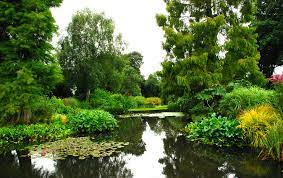
A large pond with native planting
Most of us want to encourage wildlife into our garden and a pond planted with native aquatic plants is high on the list to increase the biodiversity of your garden. One thing to bare in mind right from the start when planning what aquatic natives to use, is that nearly all pond plants are very vigorous, so less really will become more! So that your pond has a wide range of habitats, grade the sides of your pond to create different planting depths, each of these planting steps will become mini habitats and will suit different pond life. Here are some natives to consider.
Starting with shallow water on the margins of the pond.
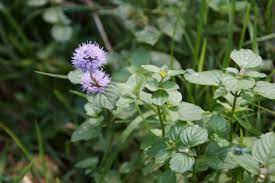
Mentha quatica
Mentha aquatica: is the water mint, with creeping stems and aromatic leaves when crushed and pink/ purple flowers in spring. It will be happy in damp areas and in water up to 150mm. It is very vigorous so better in larger ponds.
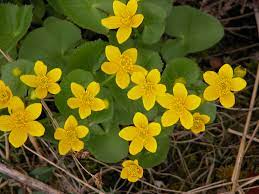
Caltha palustris
Catltha palustris: King cup/Marsh marigolds, this is a much better behaved marginal shallow water plant, forming a compact habit, with bright yellow large buttercup flowers in mid spring. Planting from damp margins up to 50mm deep water.
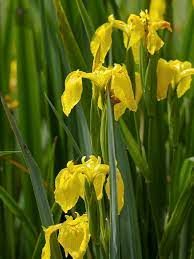
Iris pseudacorus
Iris Pseudacorus: Yellow flag, no wildlife pond would look right with out this beautiful native, very tolerant from almost dry soil to damp boggy margins up to 75mm of water. Mid green sword like leaves and a secession of yellow flower from April into May.
Medium depth of water from 100 to 150mm deep.
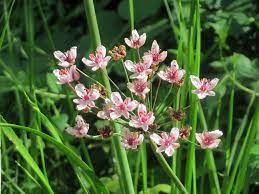
Butomus umbellatus
Butomus umbelletus: Flowering Rush, this beautiful reed has dark leaves up to 70cm tall and in May heads of dropping pink bells, borne on thin stems that radiate out, like an umbrella, it forms dense clumps in water from 50 to 100mm deep, not quite as vigorous as some other pond plants.
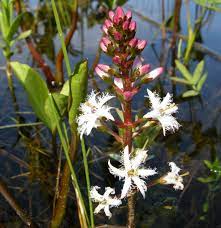
Menyanthes trifoliata
Menyanthes trifoliata: Bog Bean, this lovely pond plant creeps around in deeper water, round the base of reeds, with pink buds in mid spring giving way to white fringed flowers. From 100 to 150mm deep water.
Deeper water planting from 130 to 170/200mm deep.
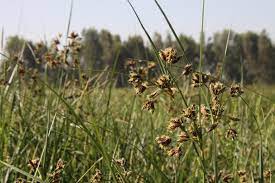
Scirpus lacutris
Scirpus lacustris: common club rush, this is a very hardy rush from the margins to deeper water, with rounded rush leaves in dark green. With a ‘fuzz’ of brown flower/grass heads about 100mm below the top of the rush stem. It may not be the most glamours plant, but it is invaluable as a habit maker in a pond.
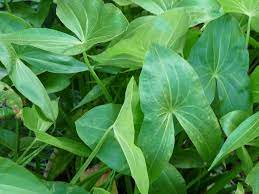
Sagittaria trifoliata
Sagittaria Trifoliate: Swamp potato, it’s common name dose not really sell it, it has arrow head shaped leaves held upright with white flowers in the spring. Suitable for smaller ponds. Water depths from 100 to 130mm.
No pond would be complete with out a water lily, and don’t be tempted, one is all you will need unless we are talking lake in size.
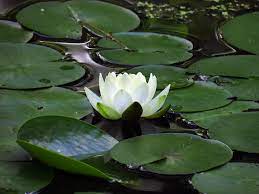
Nyhoides Alba
Nyphoides ‘Alba’, is the native white water lilly, in any still water, but it is big so if your pond it only a couple of meters in size it really will be to big. But it is a beautiful addition to any pond.
All natural ponds that do not have moving water are going to need oxygenates. These can be very vigorous and it is important to work out the water volume of your pond, to work out the numbers you are going to need, most good Aquatic Nurseries will help you with this.. Here are 2 native varieties to consider.
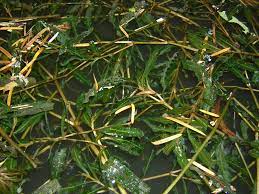
Potamegeton crispns
Potamegeton Crispns, curled pond weed
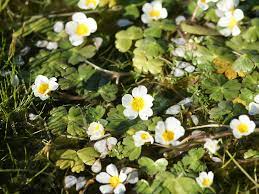
Ranunculus aquatilis
Ranunculus aquatilis, common water crow foot
Planting tip: either plant into aquatic plant baskets or to get a more natural growth pattern, cover your planting shelves in screened aquatic plant soil ( this will be very low in nutrients and mostly clay and will have been screened for stones) and plant straight into the soil. It is fine to spread the pond soil on top of the liner, just take great care of the liner when planting.
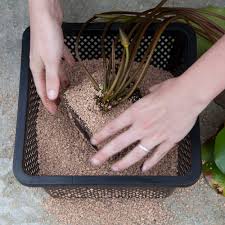
Planting pond plants in an aquatic planting basket
If you want to learn more about looking after a wildlife pond then have a look at November 2015 Blog also have a look at the portfolio section of the web site to see wildlife ponds that Arcadia Garden Design has created.
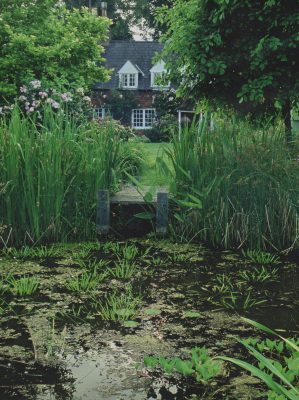
A wildlife Pond created by Arcadia Garden Design.
I hope I have inspired you to think about creating a wildlife pond or replanting with natives an existing pond. If you want help with your pond project, then do give me Emily a ring 01273 470753, I would be delighted to discuss your project with you.
